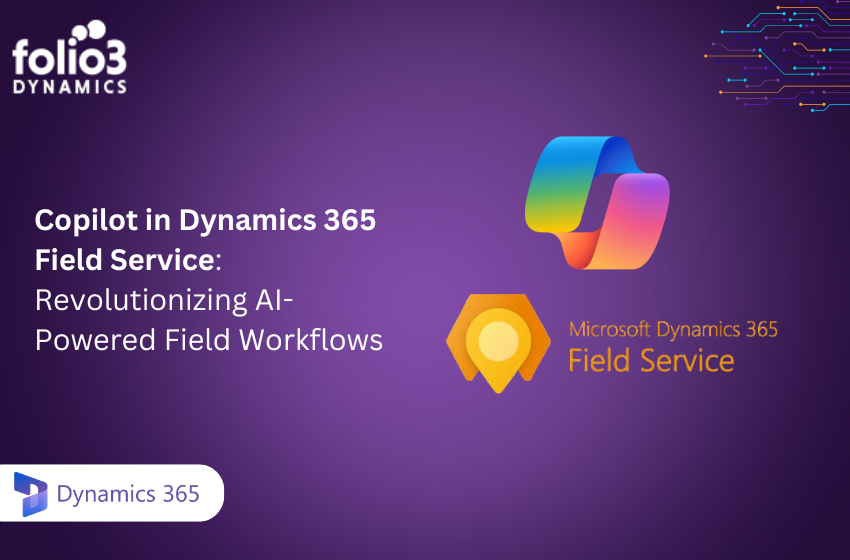When we first start implementing the testing strategy for an app, one question always pops up; system testing vs. system integration testing – what should I choose and use? These two testing stages differ in terms of why and when they are performed. It’s needless to say that both testing stages offer different opportunities to improve software performance and quality. So, if you want to know more about them, we are sharing everything you need to know about them!
What Is SIT (System Integration Testing)?
System integration testing is defined to be the software testing that’s implemented in a software and hardware environment to determine the system’s behavior. It is generally conducted on the integrated system to evaluate the system’s compliance while meeting the requirements. It is performed to verify different interactions among the modules of the software system. SIT deals with the verification of low-level and high-level requirements, as specified in the software design and requirement data.
In addition, SIT can verify the coexistence of the software with others and test the modules’ interface of the app or software. With this testing method, the modules are tested separately, which are connected to make the system. For instance, the hardware and software components of the system/app are connected and tested until the complete system is integrated.
- Benefits of System Integration Testing
The SIT testing is suitable for outlining the defects and errors in their early stage and helps gain earlier feedback on the acceptance of every module. It can help schedule the defect fixes since it’s flexible, and you can connect it with development as well. Moreover, system integration testing promises correct memory utilization, timing, control flow, and data flow. On top of everything, it stands corrected with the software prerequisites.
- How Is SIT Done?
SIT is basically a systematic technique that helps construct the app structure while managing the tests for outlining the errors linked with interfacing. The modules are connected in advance, and the entire app is tested at one time. However, during this testing process, possible errors might be encountered. It’s needless to say that fixing these errors is challenging because isolation makes it complicated since the program is widely expanded.
When the errors are corrected and rectified, the new one just pops up, and the process simply becomes a continuous loop. However, this issue can be resolved by using incremental integration. Moreover, top-down integration and bottom-up integration can also be used. As for the test cases, they are defined with the help of high-level software prerequisites. Some developers also integrate the software into the host environment. Specific units are stimulated within the host (the units are specific to the target environment).
Again, repeating these tests is essential for confirmation purposes. At this stage/level, the confirmation tests are used to identify environment-focused errors, such as allocation and de-allocation errors. If you are concerned about the practicality of the software integration within the host premise, it depends on the frequency of the functionality. In the case of embedded systems, the integration with the target environment can be strong, which means conducting the test will be impractical.
In the case of large-scale software developments, the software integration will be divided into different levels; the low levels are primarily based in the host ecosystem while the later levels become reliant on the target environment. To summarize, software integration testing is defined by software testing, while HSIT is all about testing the software and hardware at once.
- The Exit & Entry Criteria For SIT
For the most part, the ETVX strategy is utilized for performing SIT. ETVX strategy revolves around entry criteria, exit criteria, validation, and task. In the section below, we are sharing more details into these parameters of ETVX strategy, such as;
- Entry Criteria – the criteria is only about completing the unit testing.
- Inputs – the input includes the data regarding the requirements, verification plan, design document, and integration document for software.
- Activities – the test processes and cases are created, the modules are built, the test harness is developed, the build is tested. When the test is passed, the build is generally integrated with different builds, and they are tested. Lastly, all tests are re-executed, and the resultant data is obtained.
- Exit Criteria – the exit criteria is all about the on-point performance of the app or software according to the prerequisites and ensuring successful completion of the software integration module.
- Outputs – the outputs include the test reports of investigation and test procedures and cases
- HSIT
As far as hardware-software integration testing is concerned, it’s defined as the process of testing the CSC for advanced capabilities within the hardware ecosystem. The primary goal of HSIT is testing the performance of developed apps or software that’s integrated with the hardware components. This testing is done to check the interface errors of hardware and software, violations in the partitioning of software, and incorrect behavior of the loops. Moreover, it checks for inefficient response and contention errors.
HSIT deals with the high-end requirements and is performed on the target hardware. To begin with, it can be used for defining the test cases from advanced requirements, and the test is implemented on the targeted hardware. While designing the test cases for HSIT, ensure that the data acquisition is correct, data range and scaling are on point, and data is within the normal range. Moreover, it should have data from abnormal range, boundary data, correct data output, transitions, and correct utilization of the memory.
- Incremental Approach To SIT
This approach is designed to be the method of integration testing. In this approach, every module is tested, and the tests are continued while affixing other modules. However, there are two different types of incremental approaches, such as;
- Top-down approach
It’s all about testing the user interface first, and then one keeps moving downward while integrating the lower layers.
- Bottom-up approach
It’s about constructing and testing the modules at lower levels within the app structure. In simpler words, the modules are integrated from bottom to top.
- Big Bang Approach
The big bang approach is defined as the approach where modules aren’t integrated unless every module is ready. When the modules are ready, they are all integrated and executed to know if the modules are working/functioning or not. However, finding out the root cause of the error can be challenging because every module is integrated at one time. In addition, it can lead to various bugs. That being said, the big bang approach should be used only when the integrating testing has to be completed once.
What Is System Testing?
System testing is utilized for examining the functionality of the build. In addition, it is used for checking the development of the software updates, check the app’s launch through alpha testing and beta testing. In addition, system testing can be done when the integration and unit testing is complete, the prerequisites are met, and the testing conditions have been designed. System testing can check the conformity of the software according to the users’ demands, design, functionality, and performance.
System testing has a third spot in the hierarchy of software testing. Still, it includes non-functional testing as well as functional testing. Functional testing includes acceptance tests, unit, and integration, while non-functional testing involves load, security, compliance, and usability. In addition, non-functional testing includes performance tests and stress. In addition, there are two different approaches to system testing, such as;
- Use case-focused – it is used to verify the scripts to outline various ways of checking the system’s usability.
- Requirement-focused – it revolves around the test cases and when they are designed according to the sole requirements.
The Process of System Testing
- The test plan is created, along with the use cases and test cases.
- The test data is developed, and an automated test is performed along with a manual test.
- The test results are reviewed, and a report is written. In addition, the errors are written down, and regression testing is carried out once the errors are reported.
- Then, the errors are fixed that were found within the system.
- All in all, the cycle is repeated until all the errors are eliminated.
System testing tests the software code to test the end user’s experience with the app or software. In addition, it helps verify every input to check for the desired outcomes, and external peripherals are also tested. This is done to see how different modules and components interact with themselves and the system (this is often labeled as end-to-end testing). Moreover, in-depth test suites and test cases are built according to the source code.
As mentioned earlier, system testing is one part of software testing, which is done along with acceptance testing, unit testing, and integration testing. The system testing is done by the skilled and professional testing agent on the completed system/software/app before it is launched to the public. However, there are different types of system testing (around fifty), but we are mentioning the ones used by the large-scale development company, such as;
- Load testing – it is done to ensure that software will perform ideally in the hands of real-time users or the public.
- Usability testing focuses on the app’s user experience, and it also checks the control’s flexibility. In addition, it tests if the system will be able to meet the primary goals/objectives.
- Recovery testing – it is done to check if the software is reliable and can manage minor system crashes.
- Regression testing – it includes testing which ensures that no changes in developments have caused errors or bugs. In addition, it ensures that no previous bugs occur when new modules are added.
- Functional testing – it includes the availability of missing features, and the list regarding new functionalities is added to improve the functionality and usability.
- Migration testing – it is done to ensure the software can be transferred from old systems to the present infrastructure without any errors.
- Software/hardware testing – the testing is done to check the interactions between software and hardware during wide-spectrum testing of the app or system.
- Usability Of System Testing
We have mentioned that there are fifty different types of this testing method and which type of testing is used depends on multiple variables. Some of these variables include;
- Usability for testers – this is the primary factor in helping determine the specific system type. This is because the testing methods used by large-scale companies are different as compared to what small-scale and medium-scale companies use.
- Time availability – time is often a significant limitation, and it reduces the types of system testing that can be used.
- Available resources – not every tester will have the right resources to choose any testing method out of fifty. For instance, if you are working for a large-scale firm, you might have access to the automated testing software, which might not be available to other testers.
- Education – in particular, we are talking about the learning curve of every tester. This is because a tester has to have specific knowledge and skills to use a specific type of system testing.
- Budget – this is one of the most significant factors when it comes down to small-scale developing firms and individual developer/tester
The Primary Differences
- System Testing
It checks the entire system and the system as a whole, and it’s performed once the integration testing is done. System testing is used for performing non-functional as well as functional testing. However, it’s limited to the functional requirement evaluation but only uses the black box testing technique. Lastly, there is a wide range of types of system testing.
- System Integration Testing
It is used to check the interface of connected modules and components, implemented after unit testing. It is associated with functional aspects, and it works with the white-box and grey-box technique, but some developers also use the black-box technique. As far as the approach is concerned, it includes hybrid integration, top-down approach, bottom-up approach, and big bang approach.
The Similarities Between System Testing & System Integration Testing
- Both these testing systems have QA testers (quality assurance)
- Both use agile because they can be divided into multiple release cycles, and it has to maintain seamless communication with quality assurance and development teams.
- Both of them are the stages of SDLC testing.
- Both use the black-box testing technique.
- Integration testing and functional testing have become standard.
Wrapping It Up
To summarize, system integration testing and system testing are great for testing the software and app’s functionality, performance, and user experience. In addition, they can help determine the overall quality of the system, and it’s all about choosing the sweet spot between productivity, profitability, and customer’s needs.


